|
– Part 4 –
In the pleasant English seaside town of Weymouth, middle-aged American tourist Simon Wells (Macdonald Carey) hooks up with local teenager Joan (Shirley Anne Field), who leads him into the arms of a biker gang led by her brother King (Oliver Reed), who beat Simon into unconsciousness and rob him. In a nearby hotel café, freewheeling Swedish sculptor Freya (Viveca Lindfors) drops in unexpectedly on middle-aged Bernard (Alexander Knox), with whom she is having a relationship. They’re halfway through a snog when two of Bernard’s subordinates, Major Holland (Walter Gotell) and Captain Gregory (James Villiers) help the injured Simon into the café, where Freya shows concern for his welfare and learns for the first time that her scientist boyfriend is somehow tied up with the military. When Simon departs, Freya questions Bernard about his ‘secret project’, and he assures her that if he were to tell her anything about it he might be condemning her to death.
A short while later Simon is back on board his boat when Joan shows up at the quayside, and instead of quickly setting sail or angrily telling her to sling her hook, he chats casually with her and invites her on board. It’s then that King and the boys show up again, having seemingly been led there on a bike-racing dare by Joan. King threatens Simon (and when the whole gang are brandishing knives, that threat carries weight) and then does likewise to Joan, who it becomes clear he is possessively protective of, to a degree that borders on incestuous. Simon casts off and, clearly fed up with her brother’s clingy bullying, Joan runs down the quay and jumps onto his boat. King and the boys give chase, but once the boat hits open water, all they can do is hug the coastline and wait for their return.

At the same time in a heavily guarded military installation on a hill overlooking the sea, Holland and Gregory converse with civilian staff members until Bernard shows up, sits before a camera and addresses a windowless schoolroom full of young children via a two-way video feed, children who ask some rather unusual questions (“Mr. Stuart told us that brothers and sisters can’t marry. Is that true?”). Back on Simon’s boat, Joan asks to be put ashore, then leads Simon up to an empty clifftop house, where after chatting for a while the two end up in bed. By then King has been alerted to their location and is heading their way with his gang in tow, but by the time he arrives Simon and Joan have quietly departed, their repose disrupted by the arrival of Freya, who has been given free use of the house by its owner, Bernard. A short while later Simon and Joan are spotted by the bikers, and they flee and find themselves cornered at a fence surrounding the military base and somehow make their way over it and avoid the guards and their dogs (yeah, good luck with that). A tumble that should technically have killed them deposits them in the sea close to a secluded cave, where they are rescued by the children that Bernard was earlier addressing and advised not to make any noise, lest it alert what the children refer to fearfully as the Black Death.
As I would hope is clear from the above, there are a number of story strands and characters in The Damned that repeatedly intersect, crossovers triggered by initially by chance but which increasingly take on an air of predestination. This is signposted by the smallest of details, such as King leading the bikers in the sort of parade ground march that Holland and Gregory would likely salute, or a landscape wide shot of the boat on which Simon and Joan have made their escape that pulls back through a window and into the military base in which they will find themselves that evening. Intriguing it is, fluid it’s not, being as structurally staccato as the iffy rock ‘n’ roll number Black Leather Rock that swamps the soundtrack in the post-title opening scene. Almost every aspect of this multi-stranded first half infuses its realism with an air of artificiality, with a convincing-looking and intimidating biker gang who conduct themselves like the Droogs from A Clockwork Orange and whose leader shuns their uniform leather jackets in favour of a dress-to-impress jacket and tie. The dialogue similarly never feels naturalistic and often has a very written and performed feel, giving some sequences the feel of vignettes from a stage play.
Another potential barrier to engagement is the initial absence of a sympathetic character for the audience to latch on to: King is a violent bully with a disturbingly unhealthy interest in his sister; Bernard is a cheerless and secretive official who seems to be conducting some sort of experiment on reluctantly compliant children; Simon is an entitled arse who seems to think he has the right to force himself on Joan because she jumped onto his boat; and Joan seems uncertain about what she wants from anyone and does womankind no favours acquiescing so quickly to Simon’s pushy advances. Of all of the characters we meet and get to know by name in the first half, it’s the easy-going Freya that I found myself warming to, and wouldn’t you know it, she’s the only one who doesn’t end up in the military base where the majority of film’s second half takes place. Yet for reasons I still can’t quite put my finger on, the film had my attention from the moment the camera drifts slowly down from the Weymouth seafront clock tower face and that damned song explodes onto the soundtrack. I still don’t like it, but can’t get the bloody thing out of my head.
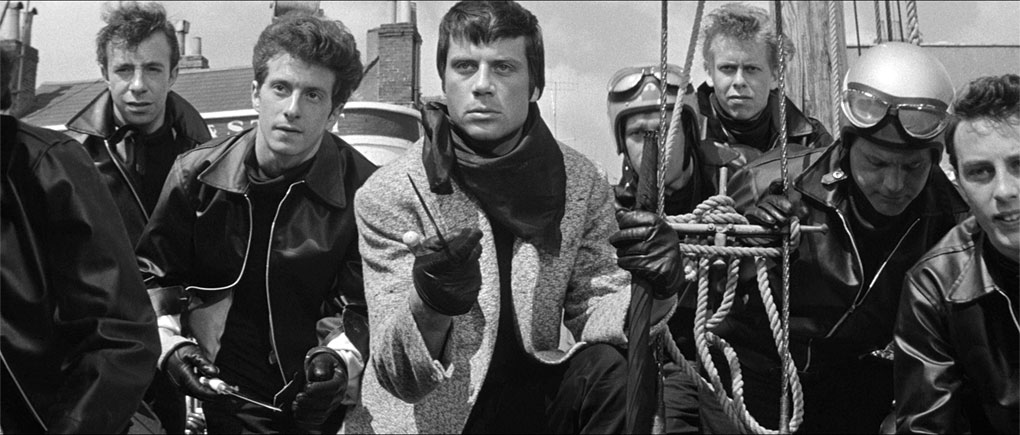
As is noted repeatedly in the extras on this disc, The Damned is quite possible Hammer’s oddest film, and on that score it’s also one of its most intriguing. Written by Ben Barzman from the novel The Children of Light by H.L. Lawrence, then rewritten in four weeks by Evan Jones, the film was directed by none other than Joseph Losey, who the following year would achieve international acclaim for his first collaboration with Harold Pinter, The Servant. In pairing a director of Losey’s individualism and vision with a genre story that Hammer doubtless procured for its commercial potential, the studio took a risk that they seem to have later regretted, which is likely why they sat on it for two years and eventually released it on a double-bill with Maniac.
All of which does a serious disservice to a film whose tonal shifts, staccato flow, sudden bursts of activity, distrust of the system and fear of the man-made apocalypse to come now feel ahead of the cinematic curve, a prelude to a more adventurous approach to content and styling that was soon to define what we think of as 60s cinema. It’s also a film of two distinct halves, the experimentation of the first giving way to a second act in which the story strands are pulled together into a genuinely unsettling and effectively handled science fiction narrative that I’m not about to reveal anything significant about here, in part because the key reveal, though definitely fanciful, is still a fascinating one and worth being surprised by. There’s a sizeable essay to be written about the actual and the allegorical journeys that the principal characters undertake here, and were this a stand-alone release I would throw up a spoiler warning and get stuck in, but I’m now running late with a review that has already eaten a few too many doughnuts. You’ll also find just such analysis in the extras and the accompanying booklet.
More traditional though the second-half storytelling may be, Losey’s gift for purposeful experimentation is still sometimes compellingly on show. This peaks with a slow and mesmerising drift through the quarters in which the children are living, one whose accompanying footsteps clue us in to the fact that we are seeing things from someone’s – or perhaps something’s – point of view and whose final reveal is one of a series of small signifiers that the audience is invited to decode in order to solve the puzzle before the answer is revealed. That the nature of the mystery has potential to be harmful for Simon, Jean and King is suggested long before it is confirmed, as is the likelihood that this particular story is probably not going to end with everyone living happily ever after in a nice house in the forest.
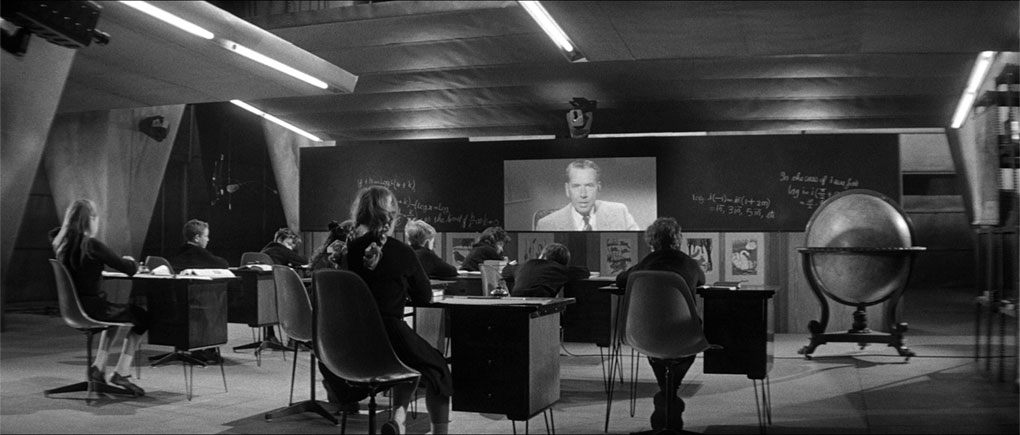
The Damned is genuinely unlike any other 60s science-fiction themed film from the 1960s, in part because for almost half its running time it’s not a science fiction film at all. Yet when the mid-narrative switch in tone and genre occurs, I found myself caring for the fate of characters I had previously enjoyed watching but had not emotionally engaged with. It helps that the children are so well cast and winningly performed, making it easy to believe that the adults would pay attention when they speak and would listen to what they have to tell them. It builds to what may be the most pessimistic climax of any Hammer film I can readily recall, and a genuinely haunting ending that will likely change how you look at seaside towns from that point on.
A close to pristine 2.35:1 monochrome transfer with crisp rendition of sharply-defined detail and a very attractive tonal range whose black levels are solid, but not at the expense of surround picture information. There’s a faint sign of flickering on some clear skies, but otherwise the image is spotless and free of damage, with a fine film grain visible on close inspection.
Another DTS-HD Master audio 1.0 mono soundtrack, and a damned good one. There are some inevitable range restrictions, but the track is otherwise clear and punchy, with clean reproduction of dialogue and music and some beef to the rumble of the motorbike engines.
Optional subtitles for the deaf and hearing impaired have been included.
When you select play on the main menu you are offered the option to play the film with the UK title The Damned or the American title These Are the Damned. As far as I’m aware, both versions are otherwise identical. A second disc containing the 87-minute UK theatrical cut of the film, which shortens the running time by nine minutes, has also been included. In the interests of getting this review out before I expire, I’ll leave you to spot the material that’s been excised. The picture quality looks to be identical to that of the full 96-minute cut.
Audio Commentary with Samm Deighan and Kat Ellinger
The Daughters of Darkness team up for an enthusiastically delivered and always enjoyable look at a film they both hold in the highest regard. In common with just about every contributor to the special features on this disc (and indeed my humble self), they pick up on the way King and his gang prefigure Alex and his Droogs from A Clockwork Orange, also noting the fact that just a year after the film’s delayed release the first seaside battles between Mods and Rockers kicked off. They look at Losey’s career in some detail and have interesting things to say about the film’s themes and recurring motifs, and while there is some discussion on several of the lead actors, their main focus by some distance is Oliver Reed. A quote from a crew member read by Ellinger about one of Elisabeth Frink’s sculptures did cause me to almost spit a mouthful of coffee across my keyboard in laughter.
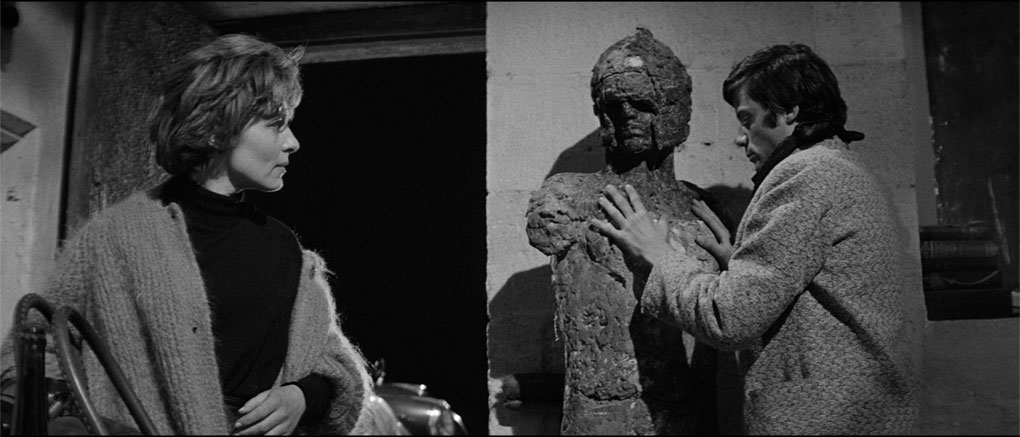
On the Brink: Inside The Damned (26:35)
Following the same format as the previous Marcus Hearn-directed featurettes, the usual trio of contributors has been handily expanded to include Nick Riddle, author of Constellations: The Damned, whose knowledge of the film and its production pays dividends here. As ever, this provides a useful overview of the film and its making, and despite some inevitable overlap with other interviews and the commentary, it does include some interesting observations and information. Rigby breaks ranks by being more critical of elements that others here and elsewhere on the disc seem happy with, and provides information on the three cuts of the film, two of which have been included in this set (the third is apparently buried in Hammer’s vault).
Hammer’s Women: Viveca Lindfors (14:25)
Lindsey Anne Hallum looks at the career of Swedish actor Viveca Lindfors, who as sculptor Freya creates what for me is the film’s most intriguing character, one I’d have been happy to see given more screen time. Hallum talks about Lindfors’ performance and character in The Damned, the on-set tension between her method acting and the more traditional approach taken by Alexander Knox, and the film’s use of a bird motif, one that I admit that I hadn’t really picked up on but now acknowledge.
Cast and Crew Interviews
Shirley Anne Field: Looking in the Right Place (10:05)
It’s always a serious plus when a distributor is able to secure an interview with a lead player from a film made over half a century ago, and such is the case with this most welcome chat with actor Shirley Anne Field. Field recalls working with Losey (“one of the nicest and strangest people I’ve ever met”), being abandoned by the crew once when filming in a quarry, pushing to be allowed to do the stunt where she has to jump onto Simon’s boat, and more. She also confirms a story told elsewhere about Oliver Reed getting his face cut in a nightclub fight and wearing the scar with a degree of macho pride.
David Palmer, Kit Williams and Christopher Witty: Children of the Damned (23:16)
Three of the young actors who play the children in the film are interviewed individually about their experiences working on it. They confirm Losey’s reputation as perfectionist, that Shirley Anne Field was universally loved, and each has a story or two about the shooting of specific sequences. All three are likeable communicators and their stories are engaging and intermittently enlightening.
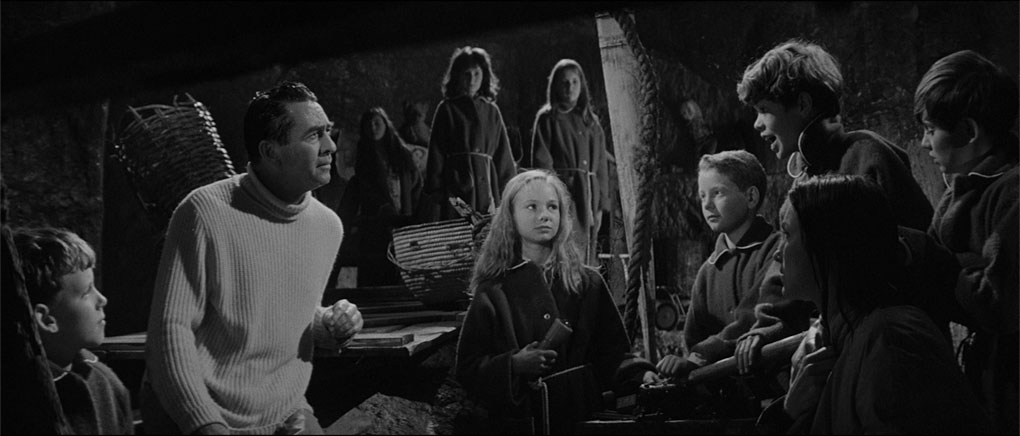
Evan Jones: Something Out of Nothing (6:36)
Screenwriter Evan Jones recalls being contacted by Losey seven days before he began shooting and asking him if he could completely rewrite the existing screenplay in that time, a challenge he instantly (and successfully) responded to. He talks about Elisabeth Frink and even has one of her sculptures on his shelf, and has a few words about the blacklist, which both he and Losey were victims of. He also points out that some of the best writers in Hollywood were left-wing, and handily reminds us that being left-wing doesn’t make you a communist.
Anthony Heller: Smoke Screen (11:22)
Camera operator on the film, Anthony Heller (this appears to have been his final film in that role), tells a story about how he first worked with Losey that is most interesting for how it ends. Losey’s perfectionism and attention to detail gets a further mention, and Heller claims that the cast and crew sometimes struggled to understand what Losey was saying due to his accent. He also confirms a story told elsewhere that the way the shots of Oliver Reed driving were filmed was by strapping him and the camera to the bonnet of the car.
Critical Appreciations
Gavrik Losey: Beneath the Surface (25:37)
Joseph Losey’s son Gavrik relates how his father became involved with Hammer and how the story of The Damned changed in the final rewrite. He describes it as a flawed but interesting picture, highlights Losey’s use of both music and silence and reveals that he was happy to make cuts to his films if the process was collaborative but loathed the idea of others ripping the film apart outside of his control. Entertainingly, he describes Hammer as “a particular kind of sausage factory with a slightly better sauce on it.” Now you know where the title of this review came from.
I Q Hunter: Beyond Black Leather (14:20)
Professor of Film Studies at De Montfort University, I.Q. Hunter, describes the film as the closest Hammer ever got to making an art film and one of their bleakest, looks at what the appeal of the book was for the studio and praises the film’s direction, cinematography and use of symbolism. In common with some others on this disc he notes the connections between the film and both A Clockwork Orange and Dr. Strangelove and the similarity of Elisabeth Frink’s sculptures to... ah, nearly dropped a spoiler there.
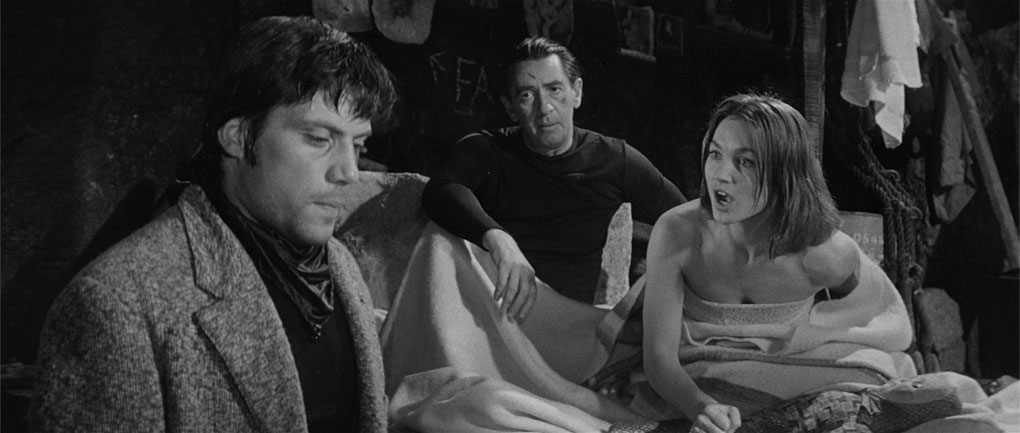
Neil Sinyard: No Future (25:29)
Echoing the views of others on this disc, film scholar Neil Sinyard describes The Damned as the strangest film to come out of Hammer, looks at why the story might be of interest to Losey and talks about the lead actors and their characters, the look of Elisabeth Frink’s sculptures, the Kubrick connection, and more.
The Lonely Shore: Huckvale on Bernard (20:50)
David Huckvale here examines the career of Hammer’s regular composer James Bernard (whose biography Huckvale authored) and once again takes apart the key themes of the score, including that song... As ever, it’s fascinating stuff.
Isolated Music and Effects Track
For those who enjoy such extras. Useful more for the music than the effects, I would think.
US Theatrical Trailer (2:43)
A crassly noisy trailer that sells the film as something very different from what it is, and seems to be trying to link it to other films of note (“A game for the Wild Ones!” the narrator blurts out over shots of King and his gang) and is loaded to the gills with spoilers.
Joe Dante Trailer Commentary (3:25)
Dante observes that this was clearly a film that nobody knew how to sell, covers how it slots into Hammer’s output at the time, and reveals that he has “never shown this picture to anyone who didn’t think it was a knockout.”
Image Gallery
50 screens of monochrome publicity stills, posters and a magazine cover.
Booklet
Following the credits for the film, this booklet opens with a terrific if spoiler-laden (this has to be expected) examination of the film and its main themes by Richard Combs. After this, we have extracts from various interviews given by Losey in which he talks about the problems he had with Hammer and American distributor Columbia, and how this impacted on the film’s fate, as well as the role of symbolism and motifs in the film and how the script was reshaped. Next we have snippets from the American press book, which are followed by extracts from three contemporary reviews, two of which are dispiritingly sniffy.
This is a tough call given the sheer quality of all of Indicator’s Hammer box sets, but I have a sneaking suspicion that this one is destined to become my favourite. Three of the films I adore and the other I like a lot, and the transfers are so good and there are so many high quality special features that I have a feeling I’ll be coming down for days after finally posting this review. If you’re a Hammer fan then you probably had this on pre-order and don’t need me to tell you how great it is, and if you did so directly from Indicator you’ll doubtless also have the Revenge of Frankenstein poster that was thrown in for free. I’ll save the story of how I nearly lost mine for an overdue blog. If you have a fondness for Hammer films and you don’t have this set yet then for heaven’s sake get it before the limited edition runs out. It’s brilliant. Unreservedly recommended.
< previous
The Revenge of Frankenstein | The Two Faces of Dr. Jekyll | Taste of Fear
|